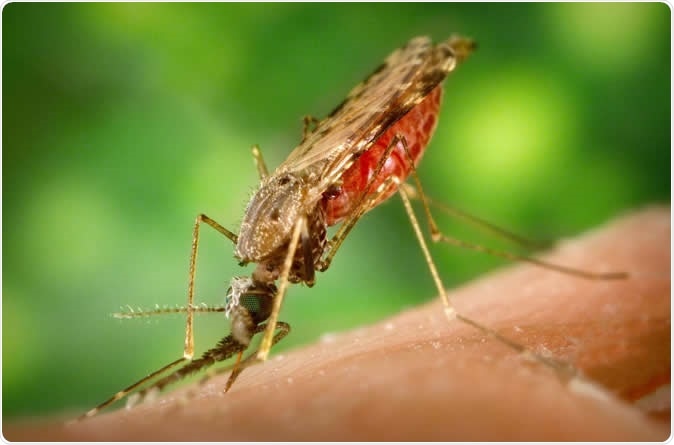A new study published online in the journal Emerging Infectious Diseases describes the appearance of a new protozoan infection carried by insects which causes symptoms that mimic the disease called visceral leishmaniasis, caused by a different parasite.
The new sickness is resistant to ordinary anti-Leishmania drugs, however, and is carried by a different insect host. Moreover, this parasite has been known only to infect insects so far. The study gives rise to fears that such untreatable parasite infections could become more important in the days to come.
The problem
Trypanosoma denotes a one-celled group of parasites with a whip-like attachment called a flagellum, so called because they have a characteristic corkscrewing motion. Leishmaniasis is a trypanosomal parasitic disease, typically rampant in tropical and subtropical countries and in southern Europe. Categorized as a neglected tropical disease, it is caused by the transmission of the parasite through the bite of certain sandfly species.
There are about 20 Leishmania species. Most commonly, the infection causes cutaneous and visceral leishmaniasis (or ‘kala azar’), causing skin sores and lesions of the liver, spleen and bone marrow, respectively. The latter is the most severe form and affects about 50,000 to 90,000 people a year, mostly by Leishmania infantum, which causes more than 90% of visceral leishmaniasis in South America. This condition has over 95% mortality if not treated.
Over the last few decades, from 1980 onwards, people have been observed to have leishmaniasis along with other protozoan infections that are more typically found in insects, such as the parasite Crithidia. The issue facing scientists was to find out if these were incidental findings or symptoms of the emergence of a new parasite that could cause widespread human infection.
The patient
The current study confirms this finding, in a 65-year old patient who was treated for symptoms like weight loss, fever, low blood cell counts and huge liver and spleen. These are standard features of kala azar, confirmed by finding the parasite strain LVH60 in bone marrow smears and on culture, and by blood tests. The patient was treated for 8 months with standard medication against the infection. However, not only did the symptoms persist, but skin lesions appeared all over the skin, having indistinct borders in contrast to the well-defined margins seen in some patients while on kala azar treatment. This is called post kala azar dermal leishmaniasis (PKDL) but is rare in Brazil. The skin lesions contained another strain, LVH60a. The patient finally succumbed to the disease as well as to complications that arose after his spleen was removed in an attempt to arrest the infection.
Repeat examination of cryopreserved parasites obtained from pre-death bone marrow and skin samples was done after the patient’s death. Researchers found that the parasitic genome was quite unlike Leishmania but more like Crithidia fasciculata, another parasite which is known to infect only insects. This identification was made using whole-genome sequencing tools followed by phylogenetic sequence pairing. Both parasites are trypanosomes, belonging to the subfamily Leishmaninae, but are different in their genetic make-up. They also colonize different insects – Leishmania is carried by female sandflies, but Crithidia by Anopheles and Culex mosquito species.

This is a female Anopheles albimanus mosquito taking a blood meal. Some Crithidia parasites are known to parasitize anopheline mosquitoes. Image Credit: CDC/James Gathany
The scientists then exposed mice, as experimental mammals, to the parasites by injection into the skin or the veins, to confirm that they cause human infection. They found that both groups of mice developed liver infection with Crithidia, and in addition, skin lesions appeared with the parasites isolated from the patient’s skin.
Implications
The study raises fears that Crithidia infection may become more common as an untreatable disease, either by itself or as part of a combined infection with Leishmania, while it remains untreatable at present. Moreover, it may be spread by Anopheles and Culex mosquitoes which are the insect hosts and vectors for this parasite. In another set of samples from a phlebotomus-related species of parasite, sequences of DNA were found that closely resemble that of both L. infantum and C. fasciculata. The authors call for research to find and identify more cases, learn about the parasite and which insects it infests, and develop new treatments.
Source:
Journal reference:
Maruyama SR, de Santana AKM, Takamiya NT, Takahashi TY, Rogerio LA, Oliveira CAB, et al. Non-Leishmania parasite in fatal visceral leishmaniasis–like disease, Brazil. Emerg Infect Dis. 2019 Nov. https://doi.org/10.3201/eid2511.181548, https://wwwnc.cdc.gov/eid/article/25/11/18-1548_article